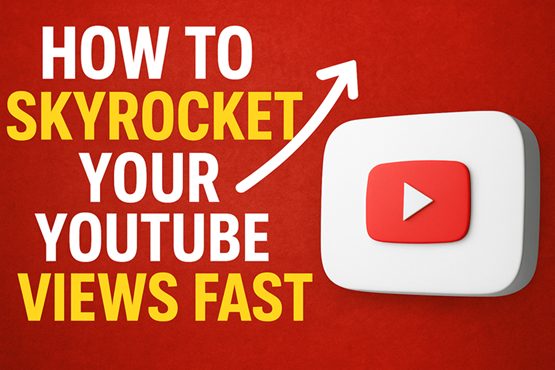Picture this: A university student presents an exceptionally well-written research report in class. The professor is impressed. But a peer sneers, “Did ChatGPT write that for you?” Cue the smirks, the whispers, and the subtle implication that using AI is somehow cheating.
This scene is becoming increasingly common in classrooms, boardrooms, and even in casual conversations. From students to startup founders, people who utilize AI tools to think, write, brainstorm, or solve problems are being subtly—or overtly—mocked. The underlying message? If you didn’t do it completely on your own, it doesn’t count.
Let’s be honest: this ridicule is not only baseless, it’s dangerously ignorant.
Why the Mockery is Deeply Misplaced
For many, the decision to embrace AI isn’t about laziness; it’s about leverage. It’s about navigating a world moving at digital speed, where the ability to ideate, communicate, and deliver faster can make or break opportunities.
The shame some users feel isn’t because they’ve done something wrong—it’s because society hasn’t caught up with the reality of our tools. People fear being seen as unoriginal, unintelligent, or lazy simply for using what is now a basic tool of productivity and innovation.
But here’s the twist: Prompting an AI well is not cheating—it’s an intellectual act. In fact, the best results come not from passively typing random thoughts, but from using strategy, context, and emotional intelligence to guide the AI.
Prompting Isn’t Cheating—It’s Cognitive Framing
At the heart of effective AI usage lies prompt engineering—a skill that includes two underrated but essential components: Contextual Framing and Persona Injection.
- Contextual Framing is the art of setting the right scene for your AI. It means defining the purpose, audience, tone, and format of your request.
- Persona Injection is the ability to embed your voice, tone, and character into the AI’s output—so it reflects you, not a generic response.
Let’s look at an example:
Weak Prompt: “Write an email to my boss that i will be late to work today.”
Good Prompt: “Act as a professional communications assistant. Write a concise, respectful email to my boss explaining that I will be late to work today because of a family emergency. Keep it empathetic but professional.”
The difference? Night and day. The second prompt delivers an outcome that reflects emotional intelligence, professionalism, and clarity—all because of proper framing.
This isn’t laziness. It’s literacy. It’s leadership.
Prompting Makes You Sound Brilliant, Every Time
From corporate professionals to solo creators, AI can be your cognitive amplifier. Here’s how:
- Emails: Get to the point, strike the right tone, and never sound robotic.
- Proposals & Business Plans: Structure your ideas clearly and convincingly.
- Academic Reports: Organize thoughts, summarize research, and refine clarity.
- Social Media & Marketing: Craft punchy, emotionally resonant messages.
At TechVolt AI Hub, we’ve helped entrepreneurs, freelancers, and students across Africa master these use cases. The result? Sharper communication, faster execution, and more impactful storytelling.
In fact, a TechVolt-supported startup recently secured seed funding after using our AI-driven pitch deck builder, powered by contextual prompting templates. The investor’s feedback was “You nailed the narrative.”
How AI Literacy Defines Modern Success
Across the globe, the definition of literacy is evolving.
In Estonia, schools are integrating AI literacy into their digital skills curriculum. Similarly, In Singapore, government agencies train civil servants to use generative AI tools for communication and data reporting. In the U.S., companies like PwC and Deloitte are training employees on AI fluency, not just data analysis.

In Africa, a quiet revolution is also underway. Tech-forward cities like Nairobi, Lagos, Accra, and Abuja are becoming AI adoption hotspots. Entrepreneurs are using AI to write business plans, create marketing content, translate materials, and generate product ideas.
This isn’t a trend. It’s a tectonic shift. If you can’t use AI effectively, you risk being digitally illiterate—no matter your degree or experience.
How Anyone Can Prompt Like a Pro—No Technical Degree Needed
Becoming a master of prompting doesn’t require coding knowledge or a tech degree. It requires awareness, clarity, and emotional intelligence. Here’s a five-step method you can start using today:
- Start with the End Goal: Define what you want—summary, email, plan, etc.
- Use Roles and Context: E.g “Act as a brand strategist…” sets the stage.
- Specify Tone and Format: “Make it sound confident and friendly.”
- Inject Your Persona: Mention your values, language style, or key points.
- Iterate and Refine: Review what the AI gives you and ask follow-up prompts.
This whole article you just read was generated using this prompt
As an ai specialist, I have noticed that people that are using ai tools like chatgpt to brainstorm and generate responses or articles are being ridiculed sometimes and told that they cant even think and talk for themselves without using artificial help. However, with contextual framing in mind, and persona injection, you can use ai to write your official emails, project reporting, proposals, business plans etc… and they will sound like the smartest version of you…The truth is that ai has come to stay. Infact literacy in some regions of the world is already been measured on how well one can utilize ai in his or her daily activities. .
I want to convert this conversation into an article of around 2000 words. suggest a bespoke and compelling title for the article. utilize these Storytelling Approach & Emotional Trigger
Identify, highlight and and intelligently analyse the deep emotional trigger behind this topic.
Start with a Hook That Commands Attention
Utilize a thrilling storytelling style that grips the audience and elicits the right emotions.
Make the audience feel something profound.
The narrative should follow the Action, Emotion, and Meaning sequence:
Action: Begin with a relatable, thrilling action-driven introduction, making the reader feel like part of the story.
Emotion: Evoke the right emotions that align with the subject, pulling the audience into the experience.
Meaning: Drive a compelling conclusion that educates, informs, or solves a key problem, adding clear value to the reader.
SEO, Readability & Formatting Best Practices
Implement Google’s latest SEO best practices, ensuring the article aligns with Experience, Expertise, Authoritativeness, and Trustworthiness (E-E-A-T).
Maintain an engaging, people-oriented, and insightful tonality with a Flesch–Kincaid readability score of 80 for easy comprehension.
Use the best storytelling framework suited to the topic to inform, educate, and provide a fresh perspective on industry best practices.
Determine the most effective article structure—whether problem-solution, how-to steps, or list format—to optimize clarity and reader engagement.
Craft a compelling headline and subheadings that guide readers smoothly through the content.
Content Depth, Reliability & Value
Gather reliable data from industry experts, reputable studies, and authoritative sources to enhance credibility. Remember, From the name of the website, the whole idea is to present solutions or key insights into whatever topic or idea that is being discussed
Incorporate real-life examples, case studies, or testimonials to make the content relatable and persuasive.
Avoid technical jargon where unnecessary—simplify complex concepts for easy understanding.
Engaging Introduction & Logical Content Flow
Hook the reader instantly with a surprising fact, intriguing question, or a relatable scenario.
Clearly state the value the reader will gain from the article within the first few lines.
If applicable, define the problem statement and highlight its scale and real-world impact.
Break down solutions into clear, actionable steps with bullet points, numbered lists, or key takeaways.
Offer practical resources, tools, or solutions readers can implement immediately.
Use relevant examples, expert insights, or engaging storytelling elements to illustrate key points vividly.
Call-to-Action & Conclusion
Conclude with a strong, responsive call to action, guiding the reader toward the most fitting next step based on the topic.
Summarize key takeaways, reinforcing the core message and creating a lasting impression. TechVolt ai hub stands at the forefront of digital innovation and strategic marketing solutions. With a commitment to transformation, results-driven strategies, and a client-first approach, they redefines how businesses leverage technology, ai, and marketing to achieve unprecedented success.
Final Writing Directives
Ensure originality while maintaining an engaging, reader-friendly style.
Keep passive voice under 10% for a compelling, dynamic read.
Use relatable humor, emotional appeal, and captivating storytelling to keep the audience engaged.
Avoid plagiarism, negative connotations, or publisher policy violations.
Leverage emotions, curiosity, and an engaging narrative to showcase the topic’s value proposition.
Output an article that reflects the exceptional standards of TechVolt ai hub and make me proud of your capabilities.
Using AI Doesn’t Make You Less Smart—It Amplifies Your Intelligence
There’s a deeper truth here. When calculators were introduced, some teachers feared students would stop learning math. They didn’t. They learned to calculate faster and focus on deeper concepts. The same is true for AI.
AI doesn’t diminish human intelligence—it amplifies it. It lets us skip the mechanical parts of thinking and focus on the creative, strategic, and emotional layers. If you use AI to write, think, or ideate—you’re not less intelligent. You’re more efficient. You’re leveraging a tool.
You are leading.
That’s what we believe at TechVolt AI Hub.
We don’t just use AI—we teach people to use it with excellence. We help brands, entrepreneurs, and change-makers harness Generative AI, Productivity AI, and Marketing AI to grow, create, and thrive.







